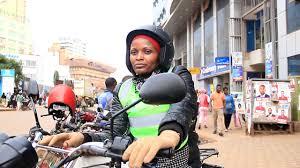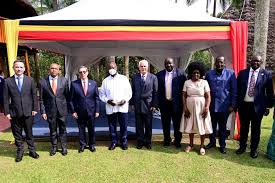For seven years, Dathive Mukeshimana has skillfully maneuvered through the busy and often chaotic streets of Kampala as a boda boda rider.
After her small business collapsed, she turned to motorcycle riding to make a living — a path that has now led her to witness major changes on Uganda’s roads.
Today, Mukeshimana says new smart traffic systems are transforming how riders like her work, making roads safer and more organized.
“I started with SafeBoda, and now I’m part of the Twezimbe Women Association,” she says proudly. “Technology is changing how we ride. The new Intelligent Transport Monitoring System helps reduce accidents, traffic jams, and even theft.”
The Intelligent Transport Monitoring System (ITMS), recently rolled out by the government, uses cameras and digital tools to monitor traffic and detect violations.
It also includes the Electronic Penalty System, which automatically issues fines to reckless drivers and riders caught on camera.
Mukeshimana says these visible cameras have changed how boda riders behave.
“When you see a camera, you become more careful,” she explains. “People used to rush through red lights or overtake carelessly, but now most of us stop and think first.”
According to Uganda Police, the ITMS helped recover 32 stolen cars and 13 motorcycles in 2025 alone. The system has also made traffic management more efficient, reducing response times in accident cases and helping police track stolen vehicles in real time.
As one of the few female boda riders in Kampala, Mukeshimana says technology has also made her feel safer in a field long dominated by men.
“Before, I used to feel scared riding late in the evening,” she admits. “Now with smart monitoring and tracking, I know the police can trace me or my bike if anything happens. It gives me peace of mind.”
Mukeshimana owns two motorcycles—one she rides herself and another operated by an employee. Both are registered under the ITMS network, which she says makes it easier to recover them in case of theft.
“If my boda boda is stolen, I just call the police. They can track it through the system,” she says confidently.
Despite the progress, Mukeshimana believes more can be done to improve the system.
She urges traffic police and ITMS operators to work hand in hand to educate riders and drivers about road safety.
“The technology is good, but it works best if we cooperate,” she says. “We need to think about pedestrians, passengers, and everyone who uses the road.”
She also encourages fellow riders to report incidents immediately using the system’s hotline.
“If someone knocks you or steals your motorcycle, report it fast. The system can track it from anywhere,” she advises.
Mukeshimana sees the ITMS not just as a technological upgrade, but as a symbol of hope for safer, more disciplined roads in Uganda.
“Smart systems are not only about cameras and fines,” she says with a smile. “They are about saving lives, protecting property, and bringing order to our busy roads.”
As more cities in Uganda adopt digital traffic management tools, riders like Dathive Mukeshimana are proving that technology — when embraced — can make even the toughest roads a little smoother and safer.



